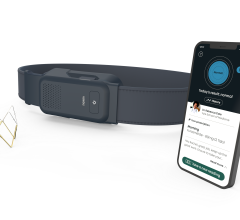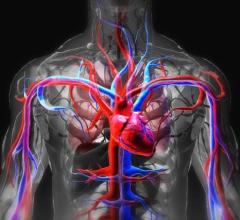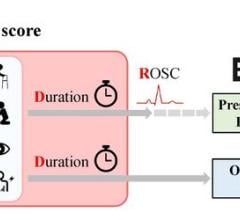
Innovation in medical technology exists to improve patient outcomes, increase surgical efficiency and enhance patient safety. Infrequently, we see medical technology innovation of a paradigmatic nature that changes the way physicians approach disease states and dramatically improve results. In electrophysiology, innovation is king, but it is often incremental, and it almost always lacks rationale, comprehensive clinical documentation and relevance for hospitals that try to balance the increasing costs of new technology with increasing demand and reimbursement that just can’t keep pace. It can sometimes seem as if the scientists, technologists and clinicians of the space celebrate innovation for the sake of innovation.
The mindset of the electrophysiologist is highly scientific, so it is no wonder technology innovation is a constant focus, but others must temper the pace of innovation with the sobriety of how to address the increasing number of atrial fibrillation (AFib) patients with solutions that are both clinically superior and financially and environmentally responsible.
At this year’s Heart Rhythm Society (HRS) conference in Boston in May, innovation, again, was the focus. The expo floor was a veritable candy store for the scientifically minded electrophysiologist, with displays of wares that promised to improve the clinician’s outcomes. You really can’t blame the electrophysiologist for digging deep into novel technology in the combined setting of manufacturer expo and educational sessions.
PFA on Display
As you walked into the expo hall, it was hard to miss the large space-age light displays of the Farapulse Pulsed Field Ablation system from Boston Scientific and the PulseSelect PFA system from Medtronic. Pulsed field ablation (PFA) is all the rage in electrophysiology. PFA is designed to address AFib, the most common arrhythmia in the US, with a growing patient population.
Antiarrhythmic drugs are typically a poor solution for AFib, as their side effects can be debilitating. Cryo- or heat (thermal) ablation represent more effective methods of treatment, but the success rate for first treatments hovers at 50%. In comparison, PFA uses electricity to “zap” cardiac cells, which is a dramatic detour from established thinking that AFib ablation is about thermal treatments. PFA catheters and energy delivery systems have proven very effective in clinical studies, and initial adoption rates are surprisingly high (electrophysiologists typically do not easily part with their preferred technologies).
Three important studies were presented at HRS 2024 to make the case for PFA:
- Boston Scientific’s Faradise study (Farapulse PFA) showed similar efficacy to thermal ablation, but significantly shorter procedure time, which theoretically translates to better operational efficiency and better patent safety (less time with fluoroscopy).
- Another Farapulse PFA study looked at the post-ablation atrial arrhythmia (AA) burden associated with PFA and found less AA burden and improved quality of life in the study population.
- Biosense Webster’s Varapulse PFA platform was also the subject of a study, the admIRE study, which showed strong efficacy and safety results in non-fluoroscopy procedures.
I do not usually get super excited about new technologies in electrophysiology because the adoption is always slower than predicted. However, PFA looks like it is changing hearts and minds rapidly. However, if you take a step back, what you are looking at is a technology that may be functionally revolutionary, but hardly dramatically improves patient outcomes. The operational and safety benefits are “nice,” but AFib ablation has never really been a dangerous procedure. Shortening procedure time rarely has a 1-to-1 impact on lab efficiency (i.e., the fact that a procedure is 20 minutes shorter doesn’t mean you can fit in another patient). And importantly, the cost of PFA ablation is dramatically higher than thermal ablation.
So, again, innovation is great. But should electrophysiologists really turn to a new technology that seems to solve a non-existent problem at a much higher cost?
4D ICE, AI and Remote Monitoring
Meanwhile, there continued to be a lot of talk about 4D intracardiac echocardiography (ICE) as an improved means of visualizing the heart prior to ablating. However, I didn’t really see any 4D ICE catheters on the expo floor. Maybe we’ll see more next year, when PFA leaves a bit more “space” for innovation in non-therapeutic modalities.
Artificial intelligence (AI) is knocking on the doors of virtually all industries today, promising to improve productivity, efficiency, and — in the case of healthcare — patient care quality. AI can impact patient care quality and surgical outcomes in electrophysiology in several ways:
- Remote heart monitoring solutions are getting dramatically better, and AI-powered home care is becoming a viable option.
- Surgical techniques can theoretically be improved or made more effective through AI-enabled treatment approaches and technologies.
At HRS 2024, remote monitoring continued to be the focus, and AI does seem to have an interesting impact on patients in electrophysiology, as remote monitoring solutions promise better safety, more precise diagnosis and monitoring and better efficiency of patient treatment processes.
Interventional cardiology and peripheral cardiac procedures have migrated from the hospital to less expensive, more efficient ambulatory surgery centers (ASCs) and office-based labs (OBLs) over the past decade. Electrophysiology procedures have been slower to leave the hospitals. However, at this year’s HRS conference, I had several conversations with ASC groups and electrophysiologists about AFib procedures performed outside of the hospital. We are still waiting for reimbursement codes to get updated, but in the meantime, I think we will see fast growth in non-hospital AFib procedures over the next year. The cost advantages are enormous, and safety concerns can be mitigated.
Putting Reality at the Center of Conversations
Every year, I appreciate all the hard work behind HRS. It is always interesting to see the innovations and discuss them with electrophysiologists. Every year, we also try to discuss how innovation needs to be balanced with very real concerns about the financial and environmental sustainability of new technology. As with PFA, it is worthwhile asking if the benefits of new technology outweigh the increased financial pressure it will bring to labs and hospitals across the country.
Somehow, we need to get to an innovation effectiveness index that can guide the electrophysiologists and help them understand the incremental clinical value vs. the incremental cost increases. In line with this, we handed out business cards at HRS, asking the electrophysiologist to ask three simple questions to each new technology they were exposed to:
- Does the new technology offer substantially better patient outcomes?
- Does the new technology offer procedural efficiencies that can lead to better lab economics?
- Does the new technology reduce the electrophysiology lab’s carbon footprint (and where is the study)?
More and more electrophysiologists want to have this discussion as well, and hence enforce a realistic view of how population care, financial responsibility, and environmental sustainability should balance the fascination with innovation.

Lars Thording, PhD, is VP of Marketing & Public Affairs at Innovative Health LLC. He has a background in academia, consulting and industry leadership. He has been responsible for the launch of numerous market-disrupting solutions across healthcare, insurance and technology. Originally from Denmark, he has taught at universities in Denmark, Ireland and the United States. He currently serves as the vice president of marketing and public affairs at Innovative Health, a medical device reprocessing company specializing in electrophysiology and cardiology technology. Lars currently serves on the board of the Association of Medical Device Reprocessors.


 March 25, 2025
March 25, 2025 








